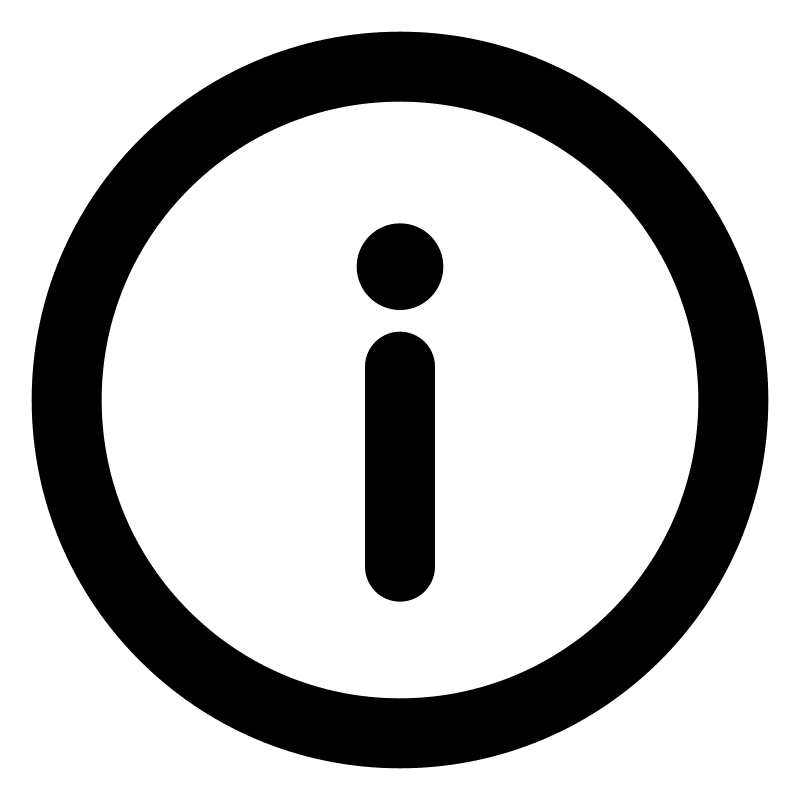How to Use a Pulse Oximeter to Check Oxygen Saturation Levels
Key Takeaways
- Finger pulse oximeters provide a quick and painless way to check blood oxygen saturation levels.
- An ideal oxygen level is between 95% and 100%.
- Pulse oximetry can help people with respiratory or cardiovascular conditions.
- The price for a home-use pulse oximetry device ranges from $25 to $100.
For people who use respiratory aids like a CPAP machine, portable oxygen concentrator, or home oxygen concentrator, regularly checking their oxygen saturation is important. Pulse oximeters are devices used to check blood oxygen levels. They’re quick, painless, and can be used at home or in medical settings.
“The pulse oximeter emits light through the skin and measures the oxygen saturation of the arterial blood,” said Chris McDermott, an advanced practice registered nurse at Intercoastal Consulting & Life Care Planning in Jacksonville, Florida. “This information is essential in determining whether an individual is receiving enough oxygen, especially during activities like exercise or sleep,” he added.
Oxygen levels can indicate respiratory and heart health for people with conditions like asthma or chronic obstructive pulmonary disease (COPD). If you’re new to using a pulse oximeter, our step-by-step guide can help you learn best practices, how to read the results, and when to seek help. Shopping for a pulse oximeter can get overwhelming, so our best pulse oximeter guide can help you determine which models offer the features you need, are easiest to read, most affordable, and more.
How to use a pulse oximeter
Read the manufacturer’s instructions carefully to see how to use your specific device and if your oximeter needs batteries. Before taking an oximeter reading, make sure your fingernails are dry and clean. Remove any fingernail polish, acrylic nails, or artificial nail tips before proceeding with the following steps:
- Warm your hands if they are cold or cool to the touch.
- Find a comfortable position and rest for at least five minutes before taking a reading.
- Place the oximeter on the fingertip of either your index (pointer) finger or your middle finger. It should feel snug but comfortable.
- Keep still for at least a minute. If the numbers keep fluctuating, you may need to be still for longer. Once the numbers remain steady, you have your reading.
- Record the two numbers you see. One is your oxygen saturation level, and the other is your heart rate. Each will be clearly labeled on the device.
- Remove the device from your finger and store it in a safe place.
Your health care provider may ask you to record your readings, which you can do in a dedicated notebook or an app on your smartphone or tablet. [1]National Health Service. How to Use a Pulse Oximeter at Home. Feb 11, 2021. Found on the internet at https://www.youtube.com/watch?v=tWlv2V-MJU8 Tracking your health trends over time can help your health care team provide the best and most accurate care.
Pulse oximeter readings
Not everyone who uses a pulse oximeter will have the same readings. For example, people with chronic lung conditions or who smoke may have a lower baseline heart rate. [2]Ridgmount Practice. How to Use a Pulse Oximeter at Home. April 29, 2021. Found on the internet at https://www.ridgmountpractice.nhs.uk/pulse-oximeters Pulse oximeters provide only an estimate of oxygen saturation (Sp02). If a U.S. Food and Drug Administration (FDA)-approved pulse oximeter reads 90%, then the actual oxygen saturation in the blood is approximately between 86% and 94%. [3]US Food and Drug Administration. Pulse Oximeter Accuracy and Limitations: FDA Safety Communication. Feb. 19, 2021. Found on the internet at https://www.fda.gov/medical-devices/safety-communications/pulse-oximeter-accuracy-and-limitations-fda-safety-communication
This chart shows the range of readings in blood oxygen levels.
Table 1 Pulse oximeter readings chart
Oxygen saturation (Sp02%) | Pulse rate (Beats per minute) | Reading |
|---|---|---|
| 95%–100% | 60–100 | Normal |
| 95% | 101–109 | Continue monitoring |
| 93%–94% | 110–130 | See your health care provider |
| 92% or lower | 131 or higher | Go to the emergency room or call 911 |
What factors affect the results?
The FDA recommends telling your health care provider if you use a pulse oximeter at home to ensure you do it correctly. [4]U.S. Food and Drug Administration. Pulse Oximeters and Oxygen Concentrators: What to Know About At-Home Oxygen Therapy. Feb. 19, 2021. Found on the internet at https://www.fda.gov/consumers/consumer-updates/pulse-oximeters-and-oxygen-concentrators-what-know-about-home-oxygen-therapy Following pulse oximeter best practices can help you get the most accurate results.
Appropriate placement is key. The first two fingers on either hand are typically best for readings because they get more blood flow than the ring and pinky fingers, explained Kathy Bendle, RN, who works in emergency departments in the Lawrence Memorial Hospital system around New London, Connecticut.
Movement can make it difficult to get a proper reading, so sit comfortably for a few minutes before using the oximeter. Also, keep your nails clean, clipped, and polish-free. Many types of nail polish and artificial nails can block the infrared light emitted from the device and possibly delay an accurate reading. [5]Yale Medicine. Pulse Oximetry. Found on the internet at https://www.yalemedicine.org/conditions/pulse-oximetry
While you can take your reading to the best of your ability, some circumstances out of your control may still affect your results. In 2021, the FDA issued a safety statement indicating that pulse oximeters may give inaccurate readings depending on a person’s skin tone. [3]US Food and Drug Administration. Pulse Oximeter Accuracy and Limitations: FDA Safety Communication. Feb. 19, 2021. Found on the internet at https://www.fda.gov/medical-devices/safety-communications/pulse-oximeter-accuracy-and-limitations-fda-safety-communication A recent study noted fewer accurate readings among Black patients than white patients. [6]Valbuena VSM, et al. Racial Bias in Pulse Oximetry Measurement Among Patients About to Undergo Extracorporeal Membrane Oxygenation in 2019-2020. Sept. 27, 2021. Found on the internet at https://journal.chestnet.org/article/S0012-3692(21)04065-4/fulltext Another study from 2020 indicated that Black patients with hypoxia (low blood oxygen levels) were more likely to get a normal reading than white patients. [7]Sjoding MW, et al. Racial Bias in Pulse Oximetry Measurement. New England Journal of Medicine. Feb. 23, 2021. Found on the internet at https://www.nejm.org/doi/10.1056/NEJMc2029240 These and other studies demonstrate that more research on pulse oximeters in diverse populations is needed to improve care and device function. [8]Valbuena VSM, et al. Racial and Ethnic Bias in Pusle Oximetry and Clinical Outcomes. Journal of the American Medical Association. May 31, 2022. Found on the internet at https://jamanetwork.com/journals/jamainternalmedicine/fullarticle/2792654
Your pulse oximeter may be faulty if it gives consistently inaccurate readings. You can report this issue to MedWatch, the FDA’s medical safety reporting program. [9]U.S. Food and Drug Administration. MedWatch Online Voluntary Reporting Form. Found on the internet at https://www.accessdata.fda.gov/scripts/medwatch/index.cfm MedWatch aims to protect patients and help manufacturers improve products.
Who needs to use a pulse oximeter?
Certain health conditions require people to monitor their oxygen saturation levels. People on supplemental oxygen therapy are likely candidates for home pulse oximeters, as are people with:
- Asthma
- Blood clots
- COPD
- A history of heart attack
- Heart disease
- A history of heart failure
- Lung cancer
- Lung disease
- Pneumonia
- Sleep apnea
Athletes or people living in high altitudes may also benefit from tracking their oxygen saturation levels, according to a recent study. [10]Dünnwald T, et al. The Use of Pulse Oximetry in the Assessment of Acclimatization to High Altitude. Sensors. Feb. 10, 2021. Found on the internet at https://www.mdpi.com/1424-8220/21/4/1263
When should you call a doctor?
According to Yale Medicine, optimal oxygen saturation levels are between 95% and 100%. [5]Yale Medicine. Pulse Oximetry. Found on the internet at https://www.yalemedicine.org/conditions/pulse-oximetry People with low oxygen levels, called hypoxia, may need medical care immediately.
McDermott explains, “If you are using a pulse oximeter and notice consistently low oxygen saturation levels, or if you experience symptoms such as persistent shortness of breath, rapid breathing, confusion, chest pain, or any other concerning symptoms, it is important to consult a health care professional.”
Where can you purchase a pulse oximeter?
Pulse oximeters can be purchased online at websites like Oxiline. They’re also available at most pharmacies and drugstores. Pulse oximeters generally range in price from $25 to $60.
Bottom line
Knowing your oxygen saturation levels is important for people with respiratory conditions like COPD and emphysema. Pulse oximeters are a quick and painless way to check your levels.
Oxygen levels between 95% and 100% are optimal for most people. If you track your oxygen saturation levels at home, connect with your health care provider to ensure you use the device correctly to get the most accurate readings.

Additional older adult resources
Frequently asked questions
An over-the-counter pulse oximeter can cost anywhere from $25 to $100. Look for FDA-approved devices.
How often you test may vary depending on your health condition. Ask your health care provider how often to check your levels.
Healthy oxygen levels are approximately 95% to 100%. If your reading is consistently below 95%, seek medical attention.
Yes. Recent research found racial bias in oximeter readings. Studies show that people with darker skin tones sometimes get less accurate readings than those with lighter skin. More research is needed to improve care for all patients.
A pulse oximeter reading of 95 to 100 percent is considered normal for healthy adults.
Have questions about this article? Email us at reviewsteam@ncoa.org.
Sources
- National Health Service. How to Use a Pulse Oximeter at Home. Feb 11, 2021. Found on the internet at https://www.youtube.com/watch?v=tWlv2V-MJU8
- Ridgmount Practice. How to Use a Pulse Oximeter at Home. April 29, 2021. Found on the internet at https://www.ridgmountpractice.nhs.uk/pulse-oximeters
- US Food and Drug Administration. Pulse Oximeter Accuracy and Limitations: FDA Safety Communication. Feb. 19, 2021. Found on the internet at https://www.fda.gov/medical-devices/safety-communications/pulse-oximeter-accuracy-and-limitations-fda-safety-communication
- U.S. Food and Drug Administration. Pulse Oximeters and Oxygen Concentrators: What to Know About At-Home Oxygen Therapy. Feb. 19, 2021. Found on the internet at https://www.fda.gov/consumers/consumer-updates/pulse-oximeters-and-oxygen-concentrators-what-know-about-home-oxygen-therapy
- Yale Medicine. Pulse Oximetry. Found on the internet at https://www.yalemedicine.org/conditions/pulse-oximetry
- Valbuena VSM, et al. Racial Bias in Pulse Oximetry Measurement Among Patients About to Undergo Extracorporeal Membrane Oxygenation in 2019-2020. Sept. 27, 2021. Found on the internet at https://journal.chestnet.org/article/S0012-3692(21)04065-4/fulltext
- Sjoding MW, et al. Racial Bias in Pulse Oximetry Measurement. New England Journal of Medicine. Feb. 23, 2021. Found on the internet at https://www.nejm.org/doi/10.1056/NEJMc2029240
- Valbuena VSM, et al. Racial and Ethnic Bias in Pusle Oximetry and Clinical Outcomes. Journal of the American Medical Association. May 31, 2022. Found on the internet at https://jamanetwork.com/journals/jamainternalmedicine/fullarticle/2792654
- U.S. Food and Drug Administration. MedWatch Online Voluntary Reporting Form. Found on the internet at https://www.accessdata.fda.gov/scripts/medwatch/index.cfm
- Dünnwald T, et al. The Use of Pulse Oximetry in the Assessment of Acclimatization to High Altitude. Sensors. Feb. 10, 2021. Found on the internet at https://www.mdpi.com/1424-8220/21/4/1263.

